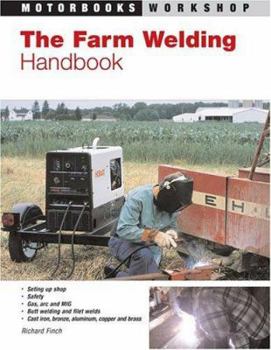The Farm Welding Handbook
Today, with a bit of investment and practice, farmers can safely and efficiently make their own repairs to metal equipment and structures. Farm Welding begins with chapters on setting up a home shop specifically for farm-welding needs, as well as welding safety and the different welding processes. While the book is largely devoted to oxyacetylene gas and arc welding, the methods most often used for heavy-duty repairs and fabrication on the farm, wire-feed MIG welding for soft metals is also covered.
Format:Paperback
Language:English
ISBN:0760322511
ISBN13:9780760322512
Release Date:October 2005
Publisher:Voyageur Press (MN)
Length:144 Pages
Weight:0.05 lbs.
Dimensions:0.3" x 8.4" x 10.7"
Customer Reviews
1 rating
The Farm Welding Handbook
Published by Thriftbooks.com User , 18 years ago
Over all, the book was excellent. Keep in mind that I am new to welding, so the book looked pretty good to me. Personally, I could care less about the history of welding and the blacksmith in the very begining of the book, but from there, Richard Finch shows the reader how to set up a good Farm Welding shop and also tells the reader what tools are needed. He too goes over saftey in the next Chapter. He then talks about the different farm welding processes such as oxyacetylene, arc (stick) and MIG (wire fed). Finch also covers how to identify metals on and around the farm. Chapter 5 covers oxyacetylene cutting, heating and plasma cutting. From there on, he pretty much goes into all of the processes I prevously mentioned only in much greater detail. He also concentrates on some "hard to weld" metals such a cast iron and aluminum. At the end of the book, he has writen a very good referance guide on where to buy welding tools and acessories. Over all, this is a very good book, especally for the farmer who does not know too much about welding already.





